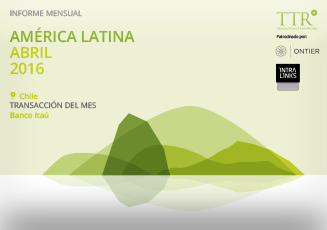Darío Laguado Giraldo
Partner at
Brigard & Urrutia Abogados
How would you describe the mergers and acquisitions activity in Latin America for the first 5 months of the year? And in Colombia?
Generally speaking, and observing the trends in the medium term, the M&A activity in Colombia and the region has experienced an important growth in the past years. In Colombia, the first months of 2017 seem to correspond to what one could denominate a preparation period. That is, we perceived a number of transactions in an early planning and preparation phase. Even though there are many variables contributing to this situation, our general reading is that certain uncertainties that were prominent last year (mainly the peace treaty and the tax reform)have now come to resolution. Many of these transactions are already advancing and we are expecting an important acceleration for the second semester of the year.
As a mergers and acquisitions expert, which sector of the Latin-American economy do you thing are more interesting for regional and/or foreign?And in the case of Colombian Economy?
There are several sectors of the economy that raise the interest of regional and foreign investors. Historically, investors have expressed their interest in large infrastructure assets, telecommunications, oil and gas and the financial sectors. In this context, we have recently seen increasing interest in the insurance industry and a re-awakening of the oil and gas industry. Furthermore, project M&A is also rising since 4G infrastructure projects are attracting investors that seek to participate in projects that have already been adjudicated.
Notwithstanding the above, we are currently navigating a new M&A wave in which, among others, it is worth highlighting four big trends that have broadened the scope in this area. On the one hand, there is increasing interest in consumer goods,which is correlated with the growth of the middle class and the disposable income of the population. Several industries can be included in this trend, among which we find the health industry, covering all the productive chain, from healthcare providers, to drugstores and pharmacies. Something similar is happening in the food industry, where vertical integration and aggregation seem to be a big trend. Lastly, we have seen general interest in consumer goods,including an assortment of industries like fitness centers, clothing and accessories, and pet food, among others.
On the other hand, private equity funds have become an important driving force for M&A activity. There is currently a good number of local and foreign funds in Colombia, investing in companies ofdifferent sizes andin multiple industries. Another important trend is related to “multilatinas”, which are currently very active in the region. In Colombia, we have somesalient examples of companies that have made important acquisitions in other countries in the region and have become regional and even global players competing with some of the main actors world-wide.We have seen this in the financial industry,in the insurance and pensions industry, in infrastructure and in the food industry. Lastly, we are noticing an increase in thedomestic market, with transactions in which both parties are essentially local without any involvement of foreign investors.
Do you believe the Colombian M&A market has growth potential as currently structured, or do you think reforms are necessary to increase development?
I have no doubt of the potential for growth of the Colombian market. In the last years, several legal reforms have been enacted to favor the M&A activity, such as reforms in the private equity sector, reforms lifting restrictions for financial entities to grant loans for the acquisition of companies, and, in general, reforms that facilitate business in the country.
In general terms, there are no barriers to enter the M&A market. Except for a very few exceptions, there are no nationality requirements in connection with the property or management of local companies. Also, except for someregulated industries, there are no minimum capital rules, restrictions to the repatriation of capital or governmental authorizations to conduct business or acquire a company.
All in all, even though there are legal adjustments that may be desirable, the legal infrastructure in Colombia is friendly to foreign investment and, particularly, the M&A activity.
You worked for three years as an M&A advisor in New York. Are there differences when approaching operations between Latin-American and USA companies? What about the advice offered?
Markets are more intensely interconnected than ever, which explains why the U.S. M&A technique has been transplanted to Latin America. This is reflected in the fact that the procedures and the legal documents used in the region are very similar to those used in the U.S. and, in general, other jurisdictions that are more active in M&A. This includes, for example, the legal due diligence process,where there are no major differences. Something similar can be said about the agreements used to implement a transaction, like the share purchase agreement or the shareholders’ agreement. A foreign investor can expect these documents to be assembled similarly, and to regulate essentially the same issues that such investor would find in a jurisdiction like the state of New York (adjusted, of course, to local regulations).
Having said that, it is also true that there are subtle but important differences in the advice given to Latin American companies in M&A transactions. A lot of companies in the region are family businesses, so it is reasonable to expect more participation from the family members in the fundamental decisions, and that the negotiation process be more personal and, sometimes, more intense. Also, concepts or figures that are standard in other jurisdictions may be inadequate for local companies,demanding advisors to “translate” them to fit the local context, and a good doses of creativity to achieve the same results through the appropriate means in the relevant jurisdiction. Lastly, size is a determining factor. Transactions in Latin America tend to be smaller, which curiously does not imply they are simpler; quite the opposite these transactions maybe more complex since issues that could be irrelevant in a larger operation may become material or even deal breakers.
Undoubtfully, all of the above demands knowing the idiosyncrasy of the relevant country and the particularities of the local actors participating in the transaction.
Speaking of the United States, how do you think Trump’s protectionist approach before Latin America may affect the regional market?
It is still too soon to know how the “Trump effect” will affect the M&A market in Latin America. Without question, his protectionist policies demand prudence from investors. Nonetheless, except perhaps for Mexico, Latin America does not seem to be high enough in Trump’s political agenda and there are valid reasons to think that the business logic will prevail and that the region will continue to attract investors from the United States. In fact, in a recent trip to Mexico, colleagues from other firms mentioned to me that even though there was anxiety during the first two months of the year, the markets reacted quickly and currently the M&A activity in Mexico does not seem to have been affected by Trump´s policies.
The negative effects, if any, may be compensated with investment from other countries (apart from countries that have traditionally set eyes in the region, China has given clear signs of interest and it seems like it is only a matter of time before it becomes an important actor), and by the strengthening of the local and regional markets.




